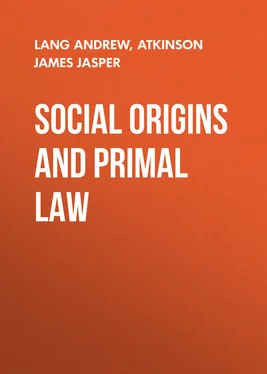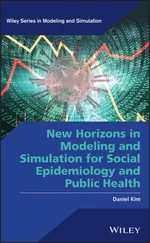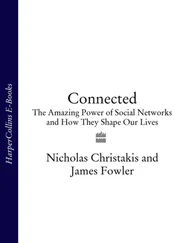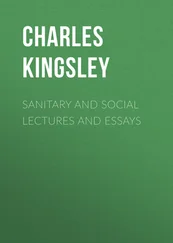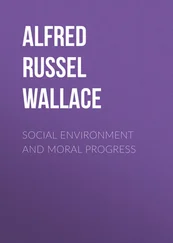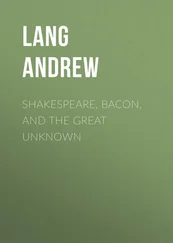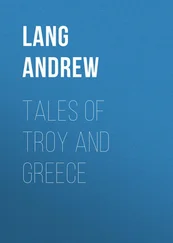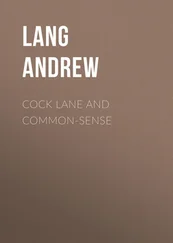Andrew Lang - Social Origins and Primal Law
Здесь есть возможность читать онлайн «Andrew Lang - Social Origins and Primal Law» — ознакомительный отрывок электронной книги совершенно бесплатно, а после прочтения отрывка купить полную версию. В некоторых случаях можно слушать аудио, скачать через торрент в формате fb2 и присутствует краткое содержание. Жанр: foreign_antique, foreign_prose, на английском языке. Описание произведения, (предисловие) а так же отзывы посетителей доступны на портале библиотеки ЛибКат.
- Название:Social Origins and Primal Law
- Автор:
- Жанр:
- Год:неизвестен
- ISBN:нет данных
- Рейтинг книги:3 / 5. Голосов: 1
-
Избранное:Добавить в избранное
- Отзывы:
-
Ваша оценка:
- 60
- 1
- 2
- 3
- 4
- 5
Social Origins and Primal Law: краткое содержание, описание и аннотация
Предлагаем к чтению аннотацию, описание, краткое содержание или предисловие (зависит от того, что написал сам автор книги «Social Origins and Primal Law»). Если вы не нашли необходимую информацию о книге — напишите в комментариях, мы постараемся отыскать её.
Social Origins and Primal Law — читать онлайн ознакомительный отрывок
Ниже представлен текст книги, разбитый по страницам. Система сохранения места последней прочитанной страницы, позволяет с удобством читать онлайн бесплатно книгу «Social Origins and Primal Law», без необходимости каждый раз заново искать на чём Вы остановились. Поставьте закладку, и сможете в любой момент перейти на страницу, на которой закончили чтение.
Интервал:
Закладка:
THE TOTEM DIFFICULTY
At this point I lose Messrs. Fison and Howitt. I do not know what they mean, and, unless I misconstrue them, they unconsciously hold different opinions at different moments. They start with an 'undivided commune.' Mr. Fison, however, is not certain on this point. To prevent near marriages (previously universal), the commune is split into two exogamous intermarrying phratries. The names of these phratries are totemic, and each phratry has its totem. Such is their theory. How and why?
Did totemic divisions already exist in 'the undivided commune'? If so, the commune was not undivided! Or were totem names given, nobody knows why, to the two phratries at the time when the 'bisection' of the commune was made? Did the legislator send half the horde to the right, crying, 'You are sheep,' and half to the left, saying, 'You are goats,' – or rather, say, Emus and Kangaroos? This is not easily thinkable. But, if this was done, whence came the other totem kins, often numerous, within each phratry?
Mr. Fison says that the totem kins (or 'gentes') 'arose out of two primary divisions, by an orderly process of evolution, such as might be expected from the forces at work,' and 'we have seen how' the phratries subdivided 'into other subdivisions, distinguished by totems.' 73 73 Kamilaroi and Kurnai , p. 107.
But, alas, I have seen nothing of the sort! Mr. Fison has merely asserted the fact. 'The totems affect the intersexual regulations … by narrowing the range of matrimonial selection.' 74 74 Op. cit. p. 41.
Here would be a reason for the evolution of these totem kins. But this added restriction is exactly what (given phratries) the totems do not effect. There are so many totems in each phratry, but as the same totem (except among the Arunta and similarly disorganised tribes) never occurs in both phratries, the range of sexual selection is thus not more restricted by the totem than by the phratry. The members of each phratry may not intermarry, and all persons of their totem are in their phratry and so are not marriageable to them. They would all be exactly as exogamous as they are, if there were no totem rules, nothing but phratry rules. Thus the totems cannot be later deliberate segmentations of the phratry, for additional exogamous purposes, because they serve no such purpose, except where, among the Kamilaroi, a man may marry in his phratry, if he marries out of his totem. But that is a peculiarity.
Mr. Mathews writes, 'Under the group' (phratry) 'laws it is impossible for a Dilbi or Kupathin' (phratry names of the Kamilaroi) 'to marry a woman bearing the same totem name as himself, for the reason that such a totem does not exist in the division' (phratry) 'from which he is bound to select his wife. But when persons of the same group' (phratry) 'were permitted to marry each other, it became necessary to promulgate a law prohibiting marriage between persons of the same totem.' 75 75 Proc. Roy. Soc. N.S.W. xxxi. 162.
But there were totems before that novelty of marriage within the phratry, and why were they there? Moreover, under phratry laws it was already the rule that no man could marry a woman of his own totem. Obviously we are not told how the totem kins arose out of the phratries, 'by an orderly process of evolution such as might be expected from the forces at work.' One sees no reason at all for the rise of totem kins within the phratry, itself, by Mr. Fison's theory, originally totemic.
Totem kins are called 'subdivisions' by Mr. Howitt, but why were the phratries subdivided into totem kins, and why were there totem groups in 'the undivided commune' before the bisection, the phratries (the result of the bisection) being themselves, in Mr. Howitt's hypothesis, totem groups? I quote a statement of the case by Mr. Howitt (1889): 'The fundamental principle of aboriginal society in Australia is the division of the community into two exogamous intermarrying moieties. Out of this division into two groups, and out of the relations thus created between the contemporary members of them and their descendants, the terms of relationship must have grown. As the two primary divisions (classes)' ('phratries') 'have become again divided in the process of social development, and as the groups of numerous totems have been added ,' &c. 76 76 On the Organisation of Australian Tribes , p. 129; Transactions of Royal Society of Victoria , 1889.
Here the totem kins are not orderly evolved out of the phratries, nor subdivided out of them, but are 'added.' Where were they picked up, whence did they arise, why were they 'added'?
May we not conclude that no clear account, or theory, of the origin and purpose of totems and totem kins has been laid before us?
Mr. Howitt elsewhere writes, 'If the supposition is correct that, in the primary divisions, we may recognise the oldest forms, and in the subdivisions somewhat newer forms of Totemism' (newer names of totems?), 'it should be found that these earlier divisions show signs of antiquity as compared to the totems which are, according to this hypothesis, the nearest to the present time. This, I think, is the case.' Thus, in fact, some of the Australian names for the two divisions are no longer to be translated, 77 77 The natives retain sacred songs to Daramulun, but cannot (or will not?) translate them. Proc. Roy. Soc. N.S.W. xxxiv. 280.
perhaps owing to their antiquity, and sometimes the names are lost, as, elsewhere, in Banks Island. When translatable, the phratry names are totemic.
But this hardly amounts to proof that the 'primary divisions' are really older than totemic divisions, plus exogamy. The existing names of the 'primary divisions' may be older than existing totem names, in some cases. But that may be because the two 'primary divisions' endure, unchanged, while a local totem group may become extinct. 78 78 Spencer and Gillen, p. 152.
Its place, perhaps, may be filled up by a totem group of relatively recent name, or, perhaps, in a great trek into a land of novel fauna and flora, old totem names might be exchanged for new ones. 'Munki' (sheep) is said to have been recently adopted. 79 79 Howitt, J. A. I. xviii. 37-39.
Mr. Fison here corroborates my suggestion. 'If a tribe migrate to a country in which their totem is not found, they will, in all probability, take as their totem some other animal which is a native of the place.' 80 80 Kamilaroi and Kurnai , p. 235, note.
Mr. Howitt, then, believes that 'the primary class divisions' were originally totemic, and also that the 'class system' as a rule has been developed through the subdivision of the earlier and simpler forms by ' deliberate arrangement .' 81 81 Op. cit. pp. 59, 62, 63, 66.
This appears to mean that savages began by making two divisions, bearing totem names, and established them as primary exogamous divisions. Later they cut them up into slices, each slice with a newer totem name. Or the totem divisions are evolved within the phratry, somehow or other, as in one of Mr. Fison's views. Or they are 'added' – for what purpose? Thus every tribesman has now a 'class name' (phratry name) – an old totem name (say either Eagle-Hawk or Crow), and no Crow may marry an Eagle-Hawk. But, later, they split Crows up into, say, bats, rats, cats, and kangaroos, while they split Eagle-Hawk up into, say, grubs, emus, mice, and frogs. Now each person, under this arrangement, has two totem names. He is Eagle-Hawk (old) and (new) grub, emu, mouse, or frog: or he is Crow (old) and (new) bat, cat, rat, or kangaroo. If cat, he may not only not marry a Crow, but also he may not marry a cat. What could be the reason for this new subdivision of Eagle-Hawk and Crow, and for this multiplication of marriage prohibitions, which, given the phratries, prohibit nothing? 82 82 New marriage prohibitions may have been, and, I believe, were added, but the divisions thus made were not, I think, totemistic.
I shall try to show, and have already suggested, that, from a period infinitely remote, each member of the Eagle-Hawk and Crow local groups may also have been, or rather must have been, a grub, emu, mouse, or frog, bat, rat, cat, or kangaroo, by inheritance and birth. So understood, the 'primary divisions' (Eagle-Hawk and Crow) were not deliberately subdivided (as I conceive them to have been on Mr. Ho wit Vs system) into the other numerous new totem groups, nor were the totem kins added to the phratries, nor were they orderly evolved out of the phratries, but, from the dawn of Totemism with exogamy, they contained these totem groups within themselves; a fact which early man came to perceive.
Интервал:
Закладка:
Похожие книги на «Social Origins and Primal Law»
Представляем Вашему вниманию похожие книги на «Social Origins and Primal Law» списком для выбора. Мы отобрали схожую по названию и смыслу литературу в надежде предоставить читателям больше вариантов отыскать новые, интересные, ещё непрочитанные произведения.
Обсуждение, отзывы о книге «Social Origins and Primal Law» и просто собственные мнения читателей. Оставьте ваши комментарии, напишите, что Вы думаете о произведении, его смысле или главных героях. Укажите что конкретно понравилось, а что нет, и почему Вы так считаете.
